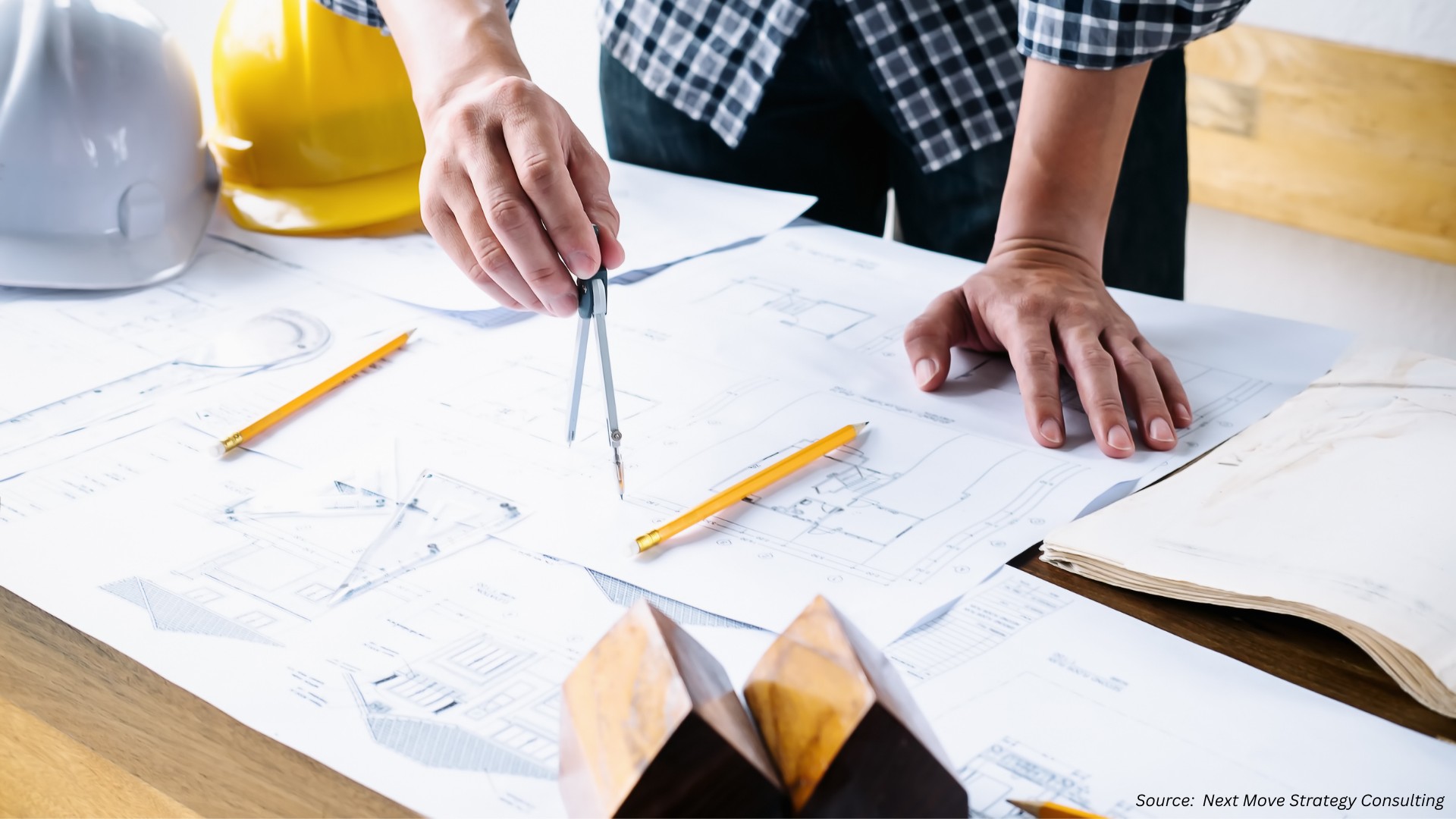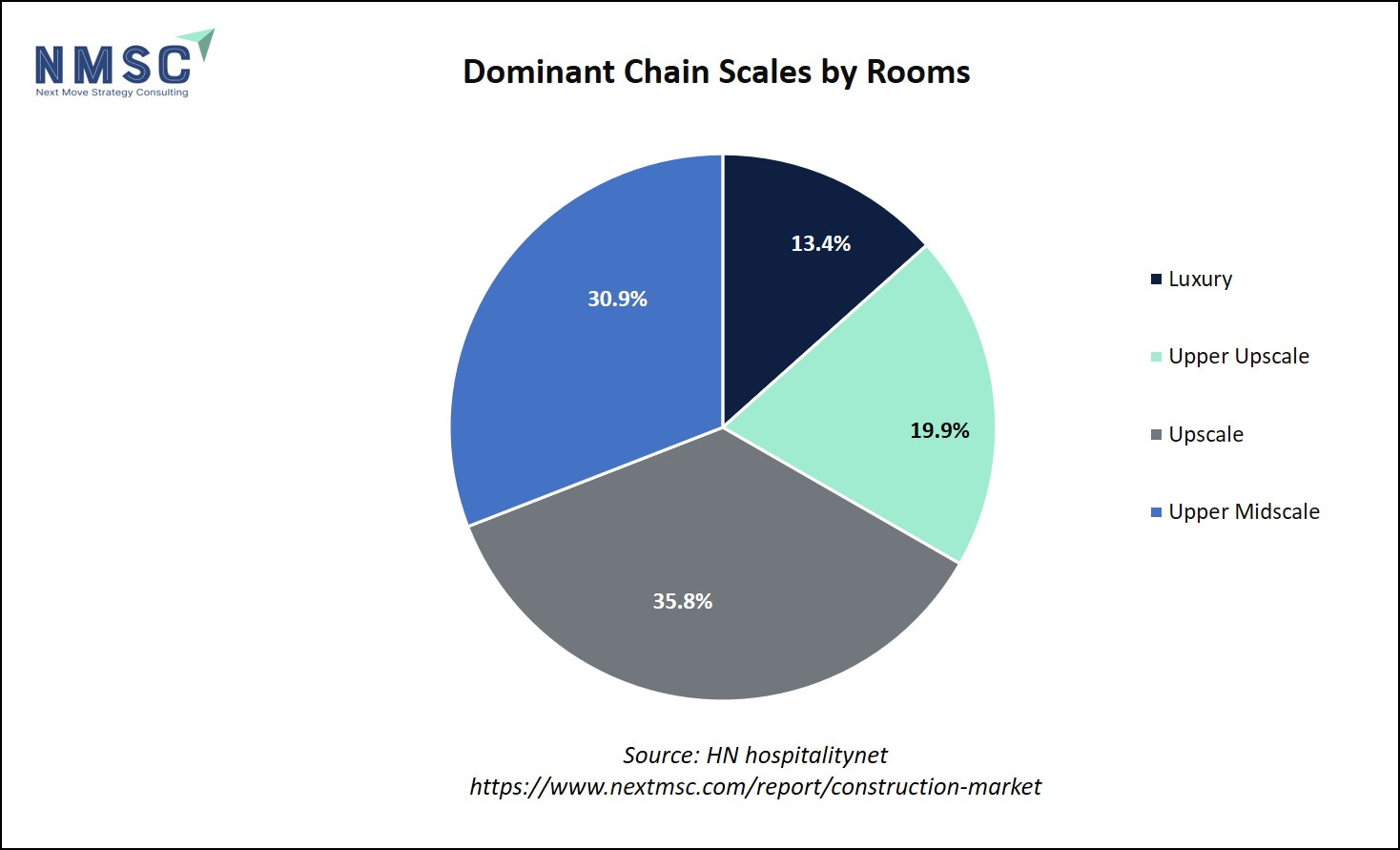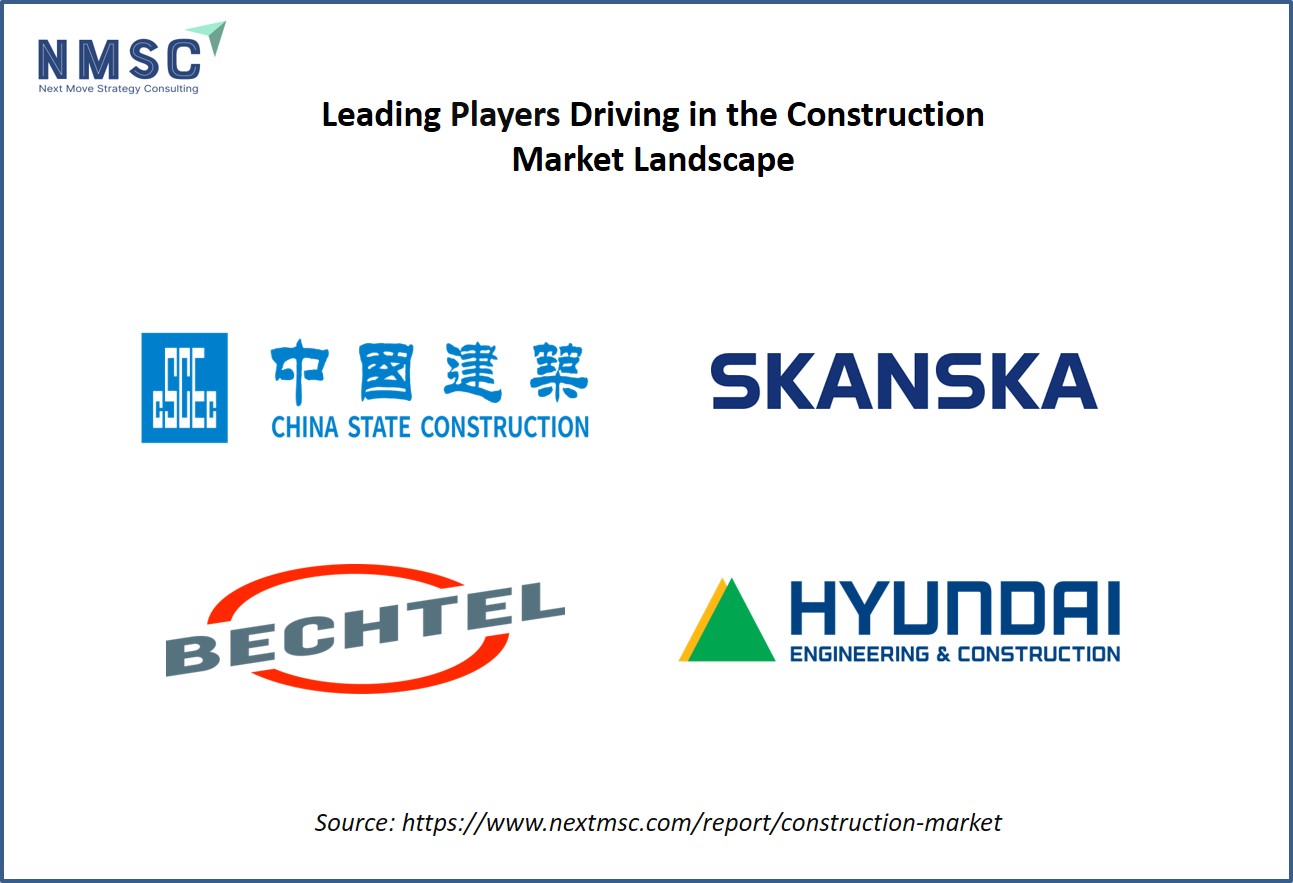Global Construction Trends in 2025: Hotels, Haulers, and High Costs
Published: 2025-09-17

The construction industry in 2025 is buzzing with activity, from record-breaking hotel pipelines to innovative heavy machinery and skyrocketing costs in major cities. Drawing from recent industry reports, this blog explores three key trends shaping the global construction landscape: the booming hotel construction pipeline, Volvo Construction Equipment’s new articulated hauler lineup, and Geneva’s rise as the costliest city to build in.
Hotel Construction Pipeline Hits Record Highs
The global hotel construction pipeline is thriving, reaching unprecedented levels in the second quarter of 2025. According to Lodging Econometrics’ Q2 2025 Hotel Construction Pipeline Trend Report, the total pipeline has climbed to 15,871 projects and 2,436,225 rooms, up 3% by projects and 2% by rooms year-over-year.
According to the report by Next Move Strategy Consulting, the global Construction Market size is projected to grow to USD 12.34 trillion by 2025. Additionally, the industry is expected to continue its growth trajectory, reaching USD 16.11 trillion by 2030, with a CAGR of 5.5% from 2025 to 2030.
This growth signals strong investor confidence in hospitality, despite economic uncertainties.
Key Pipeline Insights
-
Construction Activity: 6,257 projects with 1,086,245 rooms are under construction, unchanged by projects but down 3% by rooms compared to last year.
-
Scheduled Projects: 3,870 projects with 551,188 rooms are set to begin within the next 12 months, down 3% by projects but up 1% by rooms.
-
Early Planning Surge: A record-high 5,744 projects with 798,792 rooms are in early planning, up 10% by projects and 9% by rooms year-over-year.
-
Dominant Chain Scales: Upper midscale (4,463 projects/567,396 rooms) and upscale (3,852 projects/655,674 rooms) account for 52% of the pipeline. Upper upscale and luxury segments also hit record highs, with 1,807 projects/385,396 rooms and 1,267 projects/245,665 rooms, respectively.
-
Top Countries: The United States leads with 6,280 projects/737,036 rooms (40% of the global pipeline), followed by China with 3,733 projects/672,224 rooms (24%). India, Saudi Arabia, and Canada round out the top five.
-
Leading Cities: Dallas (199 projects/24,497 rooms), Atlanta (165 projects/19,027 rooms), and Chengdu (143 projects/25,331 rooms) top the city rankings.
New Hotel Openings
The first half of 2025 saw 970 new hotels with 138,168 rooms open globally, with 1,884 more hotels (280,079 rooms) expected by year-end. Forecasts predict 2,854 new hotels with 418,247 rooms in 2025, 2,531 hotels with 382,942 rooms in 2026, and 2,554 hotels with 382,282 rooms in 2027.
The hotel construction pipeline’s record growth reflects robust demand, particularly in the U.S. and China, with upper midscale and upscale hotels leading the charge. The surge in early planning suggests sustained momentum through 2027.
Which Key Players Are Driving Growth in the Global Construction Sector?
Major construction companies worldwide are placing strong emphasis on infrastructure projects to accelerate economic growth and support rapid urbanization. At the same time, they are increasingly adopting digital tools and modular construction methods to enhance efficiency and reduce project timelines. Notable players shaping the global construction landscape include China State Construction Engineering Corp. Ltd. (CSCEC), China Railway Group Ltd. (CREC), China Railway Construction Corp. Ltd. (CRCC), Bouygues Group, Skanska AB, Bechtel Corporation, Hochtief AG, Hyundai Engineering & Construction Co., Ltd., Shimizu Corporation, and Turner Construction Company.
Volvo CE’s Game-Changing Articulated Haulers
Volvo Construction Equipment (Volvo CE), the pioneer of articulated haulers since 1966, unveiled a revamped lineup in January 2025, ranging from A25 to A60 models. This launch, including the new A50 model, marks the company’s largest product portfolio overhaul in decades, emphasizing innovation, sustainability, and operator comfort.
Innovations in the A25-A60 Range
-
New Model Introduction: The A50 expands options in the high-demand hauler segment, catering to tough worksites.
-
Technological Upgrades: A new electronic system and in-house developed transmission improve fuel efficiency by up to 15%, depending on the model and application.
-
Future-Ready Design: The haulers are built to adapt to future drivetrains, ensuring longevity.
-
Operator Comfort: An upgraded cab enhances safety and comfort, boosting productivity.
-
Sustainability Focus: The use of low-carbon emission steel, made from recycled materials and fossil-free energy, supports Volvo CE’s goal of net-zero greenhouse gas emissions by 2040.
Volvo CE’s new hauler lineup sets a new industry standard with its focus on efficiency, sustainability, and adaptability, reinforcing the company’s leadership in construction equipment.
Geneva: The World’s Costliest City to Build
Geneva has reclaimed the title of the world’s most expensive city for construction in 2025, overtaking London, according to Arcadis’ International Construction Costs Report. Zurich, Munich, and New York City follow, driven by labor shortages, regulatory complexity, and high demand.
Cost Drivers and Opportunities
-
Top Five Cities: Geneva, London, Zurich, Munich, and New York City face high costs due to labor constraints and complex regulations.
-
Global Trends: While inflation has eased in some U.S. cities, long-term borrowing costs and geopolitical uncertainty continue to challenge budgets.
-
Growth Sectors: Data center, healthcare, and social infrastructure (e.g., education) remain strong investment areas.
-
Arcadis’ Strategies for Cost Management:
-
Long-Term Value: Design adaptable, energy-efficient buildings, like River Grove Elementary School in Portland, which uses a microgrid for resilience.
-
Certainty in Design: Use parametric tools to align projects with market and policy needs.
-
Delivery Focus: Integrated teams and digital platforms ensure budget certainty, as seen in the Tiffany & Co. Landmark store renovation in New York.
-
Collaboration: Cross-disciplinary teams drive project success through shared accountability.
-
Geneva’s rise as the costliest construction city highlights global cost pressures, but strategic design and collaboration can unlock value in high-demand sectors.
What These Trends Mean for Construction
The convergence of these trends paints a dynamic picture for the construction industry in 2025. The booming hotel pipeline reflects optimism in hospitality, particularly in the U.S. and China, while Volvo CE’s hauler innovations address efficiency and sustainability needs on worksites. Meanwhile, rising costs in cities like Geneva underscore the importance of strategic planning to manage budgets effectively.
Key Takeaways
-
Hotel Boom: The global hotel pipeline’s 15,871 projects signal strong hospitality demand, with 64% concentrated in the U.S. and China.
-
Equipment Innovation: Volvo CE’s A25-A60 haulers, including the new A50, offer up to 15% better fuel efficiency and sustainable materials.
-
Cost Challenges: Geneva’s high construction costs reflect labor and regulatory hurdles, but sectors like data centers and healthcare offer growth opportunities.
-
Strategic Solutions: Proactive design, digital tools, and collaboration are critical to managing costs and ensuring project success.
Next Steps for Construction Professionals
To navigate these trends, construction professionals should take proactive steps to stay competitive and deliver value:
-
Monitor Hotel Pipeline Opportunities: Focus on high-growth markets like the U.S., China, and India for hotel development projects.
-
Adopt Advanced Equipment: Invest in or lease Volvo CE’s new haulers to boost worksite efficiency and reduce fuel costs.
-
Implement Cost-Saving Designs: Use Arcadis’ strategies, such as parametric design and digital platforms, to manage budgets in high-cost cities.
-
Prioritize Sustainability: Incorporate low-carbon materials and energy-efficient designs to align with global sustainability goals.
-
Foster Collaboration: Build cross-disciplinary teams to enhance project delivery and adaptability.
By staying informed and strategic, the construction industry can capitalize on these trends to build a more sustainable and efficient future.
About the Author
 Nitrishna Sonowal is a skilled SEO Executive and Content Writer with over 3 years of experience in the digital marketing industry. With a deep understanding of the ever-evolving digital landscape, she blends analytical insights with creative storytelling to deliver impactful digital solutions. She creates content that resonates with both clients and readers alike. Outside of work, she enjoys dancing, baking, and traveling to new places.
Nitrishna Sonowal is a skilled SEO Executive and Content Writer with over 3 years of experience in the digital marketing industry. With a deep understanding of the ever-evolving digital landscape, she blends analytical insights with creative storytelling to deliver impactful digital solutions. She creates content that resonates with both clients and readers alike. Outside of work, she enjoys dancing, baking, and traveling to new places.
About the Reviewer
 Debashree Dey is a seasoned Content Writer, PR Specialist, and Assistant Manager in Digital Marketing, known for her expertise in crafting online visibility strategies and navigating the dynamic digital landscape. With a flair for developing data-driven campaigns and producing compelling, audience-focused content, she helps brands elevate their presence and deepen user engagement. Beyond her professional endeavors, Debashree finds inspiration in creative projects and design pursuits.
Debashree Dey is a seasoned Content Writer, PR Specialist, and Assistant Manager in Digital Marketing, known for her expertise in crafting online visibility strategies and navigating the dynamic digital landscape. With a flair for developing data-driven campaigns and producing compelling, audience-focused content, she helps brands elevate their presence and deepen user engagement. Beyond her professional endeavors, Debashree finds inspiration in creative projects and design pursuits.


















Add Comment